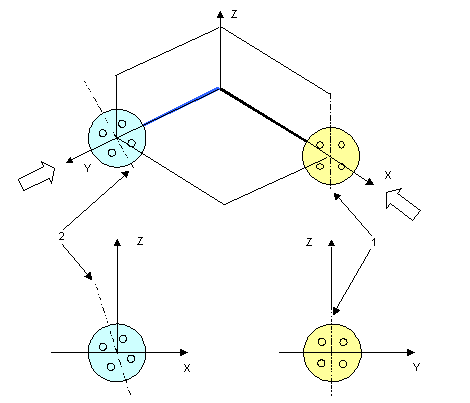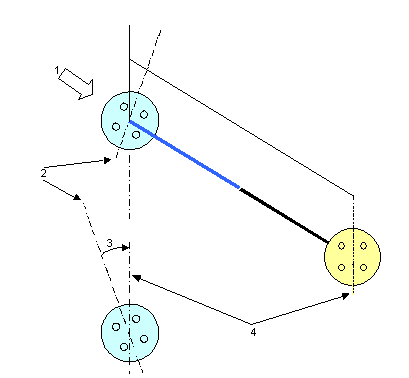About the Flange Twist Angle
If a pipe has flanges at both ends, weld the end flange to the straight pipe while rotating at an angle relative to the start flange before bending. This angle is the flange twist angle. Rotate the pipe at the flange twist angle so that after bending, the end flange bolt holes are at the correct position.
The following figure shows a pipe with two flanges welded at both ends. The start flange is yellow and the end flange is blue. The start flange baseline is along the z-axis. The end flange baseline has an angle with the z-axis.
1. Start flange baseline
2. End flange baseline
When you unbend a pipe, the remainder of the angle between the start flange baseline and the end flange baseline divided by the angle between the flange holes is the flange twist angle. Looking from the end flange to the start flange, when the rotation is in the clockwise direction, the value of flange twist angle is negative. When the rotation is in the counterclockwise direction, the value of flange twist angle is positive. The details are shown in the following figure.
1. Looking from the end flange to the start flange
2. End flange baseline
3. Flange twist angle
4. Start flange baseline
The end flange is welded on to the pipe with the specified flange twist angle against the start flange.


